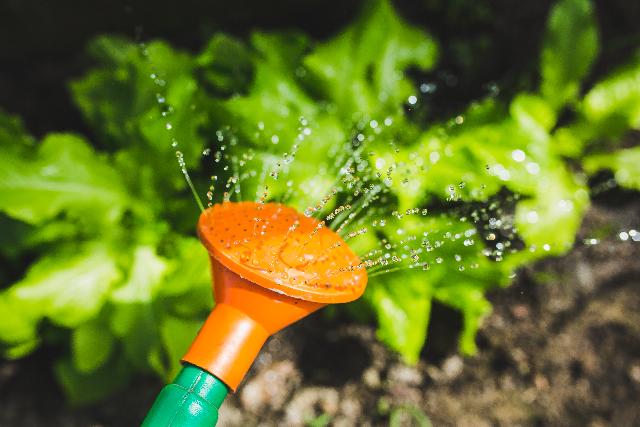Watering your garden the climate friendly way
Saving water is important to the climate-friendly gardener - whether there is a drought or not. You can conserve water and keep growing in your garden if you use the following tips for watering your garden the climate-friendly way.

Start with the Right Soil
Pretty much all gardening successes start with using the right soil. You need to build up your soil by testing it and adding to it the nutrients that you need. You’ll want to use a lot of rich compost that you can make yourself.
You also need to add mulch and cover your garden between growing seasons to help reduce evaporation and keep down weeds that also compete for water in your garden. Spend the time necessary to improve your soil before you even start planting.
You will need to add screened pumice in your soil to increase aeration, and moisture retention. With pumice well distributed in the soil, it will need less watering that usual.
Plant Strategically to Fight the Heat
You can plant your garden in such a way that you can create microclimates. For example, the right plants planted together can create shade for the soil and reduce water evaporation. Put plants together that need similar amounts of water and that produce abundantly, avoiding water hogs like broccoli and cauliflower.
In addition, if you have a particularly hot and sunny area, you can plant trees and shrubs strategically to provide shade and wind blockage, also reducing the need for watering.
Use Planting Methods from Native Americans
Native Americans plant different plants together based on their water needs and the nutrients put into their system. For example, planting legumes to help boost soil nitrogen levels, and corn which acts as a support for the legumes as they grow up. Then you can also plant squash because the bristles on them protect the corn from earworm and act as shade for the soil.
Water When Plants Need Water
Time planting when it’s not hot and sunny so that your plants can establish a root system prior to the hot and sunny time. When the roots are deeper into the soil, they’re stronger and can fight against drought easier. Plus, it helps to know what stage your plants are in because their water requirements depend on the time it is.
Many gardeners overwater a lot of their crops due to not understanding this. Many vegetables require watering only when they’re flowering or fruiting.
Choose Drought-Tolerant Vegetables and Plants
Certain plants use less water than others and will grow better with less water. Look at swiss chard, asparagus, artichoke, chickpeas, lima beans, certain varieties of squash, cantaloupe, peppers, cucumber, sage, oregano, thyme, lavender, rosemary, pineapple tomatoes, and some chilies.
Install a Deep Root Drip Irrigation System
One of the best ways to conserve water is to use a deep root drip irrigation system in your garden. This will encourage roots to develop deep into the soil instead of higher up, which can happen from watering from above. Use the irrigation system to measure and give the plants only the amount of water required to make up for lack of rain.
Watering your garden the climate-friendly way is a win-win for the gardener and the environment, because by setting up your garden correctly from the beginning you cut down on the amount of work you need to do making gardening that much more pleasurable and bountiful.
